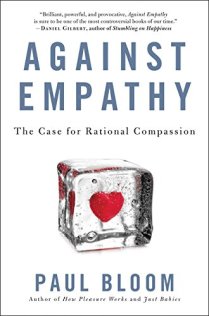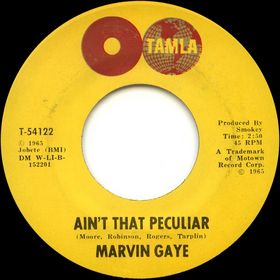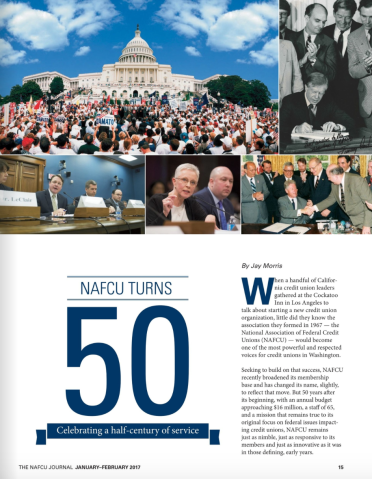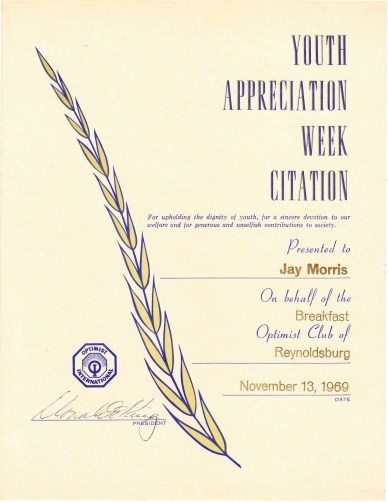 McKinsey & Company began a recent article on leading with purpose during the pandemic with a quote from celebrity chef and World Central Kitchen founder José Andrés: “Without empathy, nothing works.” The quote, McKinsey said, “highlights the reasoning behind the organization’s mission: to feed the world by being the first food responders in devastated areas.”
McKinsey & Company began a recent article on leading with purpose during the pandemic with a quote from celebrity chef and World Central Kitchen founder José Andrés: “Without empathy, nothing works.” The quote, McKinsey said, “highlights the reasoning behind the organization’s mission: to feed the world by being the first food responders in devastated areas.”
Much has been written about Andrés’ humanitarian efforts in hurricane-ravaged Puerto Rico and, more recently, in U.S. cities struggling with coronavirus. The quote about empathy comes from a Time magazine story with Andrés on the cover in a chef’s jacket. At a moment’s notice, the article notes, Andrés is ready to jump on a plane to help feed those stricken by disaster. Empathy, rather than profit, power or recognition, drives his organization.
Psychologists tell us that empathy is the ability to recognize, understand, and share the thoughts and feelings of another person. We often equate empathy with sympathy or compassion, but there is a difference. “Sympathy is feeling concern for someone else, and a desire that they become happier or better off, while empathy involves sharing the other person’s emotions,” according to Psychology Today. “Compassion is an empathic understanding of a person’s feelings accompanied by altruism, or a desire to act on that person’s behalf. “
Maybe you’ve seen the RSA animated video by best-selling author and researcher Brené Brown, who has studied and written about empathy. Brown says, “Empathy fuels connection,” while “sympathy drives disconnection.” Empathy is feeling with people, she states.
Sympathy vs. empathy
To illustrate, Brown asks us to imagine encountering someone who is in a deep, dark hole. A sympathetic person might acknowledge that “it’s bad down there” and offer advice from above. Often their response begins with the words “at least…” As in, “At least you still have your job,” or “At least you didn’t get hurt.” They apply a silver lining to the situation, suggesting it could be worse.
An empathic person will climb down into the dark hole to be with the other person. Their response is to say, “It sounds like you’re in a hard place now. Tell me more about it.” They are there to listen and share the other person’s feelings, not give advice or minimize the situation.
Brown cites the work of nursing scholar Theresa Wiseman, who studied professions where empathy is relevant and noted these four qualities of empathy:
- Perspective taking: Seeing the world as others see it.
- Staying out of judgment: Judgment discounts the other person’s experience and is an attempt to protect us from the pain of the situation.
- Understanding another person’s feelings: Removing ourselves and focusing only on the other person.
- Communicating that you understand: Making it clear to the other person that you understand where they are coming from.
“Empathy is a choice,” Brown says, “and it’s a vulnerable choice because in order for me to connect with you, I have to connect with something in myself that knows that feeling.”
It reminds me of Father Gregory Boyle, whom I’ve written about before. Boyle works with gang members in East Los Angeles and founded Homeboy Industries. In his book, Tattoos on the Heart, Boyle talks about breaking down barriers and building kinship with others. This can only happen, he relates, when we’re willing to step out of our own world and see with new eyes. “Then,” he says, “we are no longer saddled by the burden of our persistent judgments, our ceaseless withholding, our constant exclusion. Our sphere has widened, and we find ourselves, quite unexpectedly, in a new, expansive location, in a place of endless acceptance and infinite love.”
The dark side of empathy
Boyle and Andrés exemplify the good that comes from putting empathy into action, and one could argue that no significant social change can occur without it. But there’s a dark side to empathy, too. For one thing, empathy can be politicized and used to divide. Look at the way empathy has become the litmus test for how we should respond to coronavirus. Certain political leaders are said to have empathy; others are found lacking. The perspective you take most likely reflects the party you belong to.
 Yale psychologist Paul Bloom, in Against Empathy: The Case for Rational Compassion, argues empathy isn’t a very good way to make moral judgments or policy decisions. According to Bloom, we are naturally biased towards those we identify with, plus empathy tends to focus us on a single case at the expense of many others.
Yale psychologist Paul Bloom, in Against Empathy: The Case for Rational Compassion, argues empathy isn’t a very good way to make moral judgments or policy decisions. According to Bloom, we are naturally biased towards those we identify with, plus empathy tends to focus us on a single case at the expense of many others.
Not to mention, if we truly feel another person’s loneliness or hurt, it can be depressing and exhausting. Bloom advises us to try compassion, which he says increases helping behaviors and energizes us to act. In fact, that is the subtitle of Boyle’s book—The Power of Boundless Compassion.
Bloom and other psychologists point to Buddhist teachings cautioning against too much empathy. Columbia University psychology professor Tara Well writes, “Instead of focusing on empathy to the point of draining ourselves emotionally, Buddhism teaches the practice of compassion, called karuna. This is the idea of sharing in suffering, having concern for another, but essentially ‘feeling for and not feeling with the other.’”
Well recounts a study by neuroscientists Tania Singer and Olga Klimecki, where the subjects were divided into two groups—one practiced empathy and the other compassion. “The empathy-trained group actually found empathy uncomfortable and troublesome,” Well says. “The compassion group, on the other hand, created positivity in the minds of the group members. The compassion group ended up feeling kinder and more eager to help others than those in the empathy group.”
The practice of karuna, often accomplished through loving-kindness meditation, seems to be a healthy approach, one that cultivates an awareness of true compassion and the skill to avoid false compassion.
Finding a middle ground
At the very least, we need to get closer to a middle ground that promotes open and caring behavior toward others, no matter what our political leanings may be. We can start with:
- Being objective
- Being an active listener
- Avoiding quick judgments
- Wanting the best for others, even those we dislike
- Validating other viewpoints and perspectives
- Balancing competing needs
- Understanding that we can’t help everyone or solve every problem
When we live and act in this way, we can focus on the good aspects of empathy and steer clear of the negative ones. Thankfully, we are seeing this play out during the pandemic as quarantined Americans take the time to check on a neighbor, volunteer to drop off groceries to a shut-in or Zoom with a friend who’s feeling down. Social distancing is actually spurring connection. As Brown says, “Connection is the energy that is created between people when they feel seen, heard, and valued, when they can give and receive without judgment.”

 Sometimes a word strikes our fancy, delighting us like a rainbow after a storm or refreshing us like a splash of cold water. Maybe a word is used in a novel way. Or it sparks a connection, triggers our imagination or gives us a new take on an old refrain. So we stop, and we ponder. At least I do.
Sometimes a word strikes our fancy, delighting us like a rainbow after a storm or refreshing us like a splash of cold water. Maybe a word is used in a novel way. Or it sparks a connection, triggers our imagination or gives us a new take on an old refrain. So we stop, and we ponder. At least I do.




 I was going through some dusty old things the other day and found a “Youth Appreciation Week Citation” I received in 1969 from the Optimist Club of Reynoldsburg, Ohio. Wow, I thought, that’s a long time ago!
I was going through some dusty old things the other day and found a “Youth Appreciation Week Citation” I received in 1969 from the Optimist Club of Reynoldsburg, Ohio. Wow, I thought, that’s a long time ago! Last month, I invited Ami Neiberger-Miller and Sandra Wills Hannon to speak at our
Last month, I invited Ami Neiberger-Miller and Sandra Wills Hannon to speak at our  Time is something that we constantly obsess about. An army of business consultants and self-help gurus has made millions with countless time management courses, day planners, books and apps that we eagerly devour.
Time is something that we constantly obsess about. An army of business consultants and self-help gurus has made millions with countless time management courses, day planners, books and apps that we eagerly devour.

